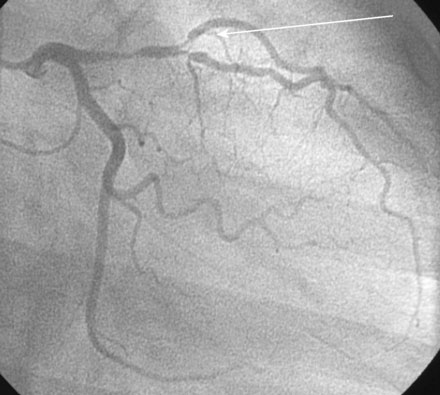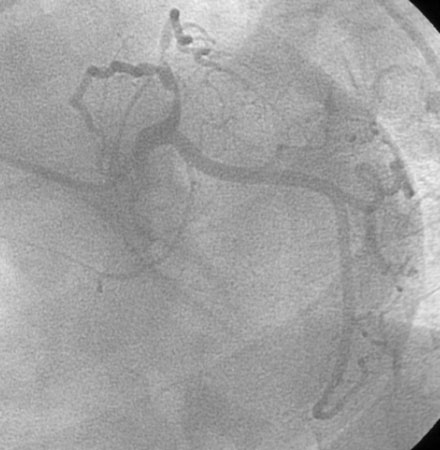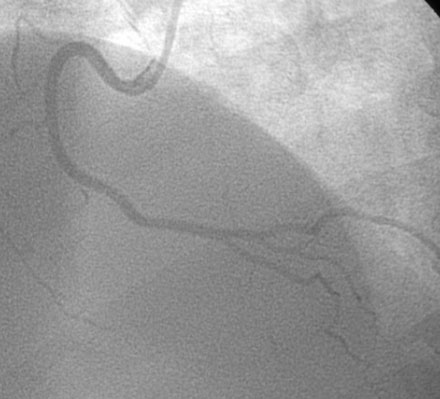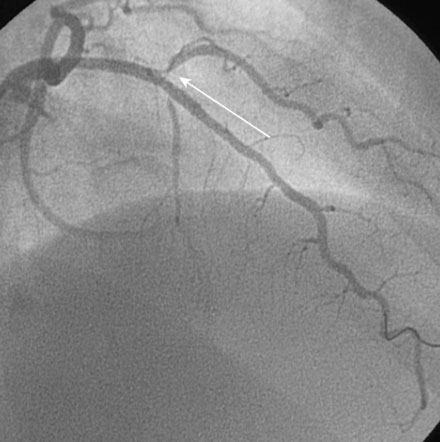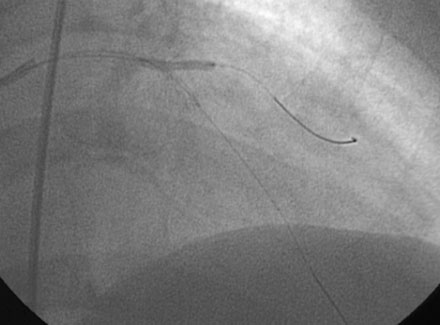CASE 2 LAD-Diagonal Bifurcation Lesion
Cardiac catheterization
Cardiac catheterization revealed a complex 90% stenosis of the left anterior descending (LAD) artery at the bifurcation of a first diagonal branch (D1). The stenosis extended proximal and distal to the D1 branch; in addition, the D1 branch had an 80% stenosis at the ostium (Figures 2-1, 2-2 and Videos 2-1, 2-2, 2-3). No other significant lesions were observed (Figure 2-3), and left ventricular function was preserved.
The physician chose to treat the artery percutaneously. Using bivalirudin as the procedural anticoagulant, a 6F Judkins left guide coronary catheter with 4 cm curve (JL4) was used to engage the left coronary artery. A 180 cm long, 0.014” floppy-tipped guidewire was advanced into the LAD and the lesion directly stented using a 2.5 mm diameter, 25 mm long sirolimus-eluting stent. This resulted in an excellent angiographic result in the LAD (Figure 2-4 and Video 2-4). A second floppy-tipped guidewire was positioned in the first diagonal branch, passing through the LAD stent. The diagonal stenosis was first dilated with a 2.5 mm diameter by 15 mm long compliant balloon (Figure 2-5) but this produced a suboptimal result at the ostium (Figure 2-6 and Video 2-5). Thus, a 2.5 mm diameter by 18 mm long sirolimus-eluting stent was positioned at the ostium and deployed (Figure 2-7). The final angiographic result is shown in Figure 2-8 and Video 2-6.
Stay updated, free articles. Join our Telegram channel

Full access? Get Clinical Tree


